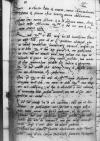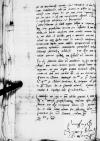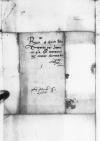List #2786
Seweryn BONER do Ioannes DANTISCUSCracow (Kraków), 1545-01-25
| odebrano Heilsberg (Lidzbark Warmiński), 1545-02-17 Rękopiśmienne podstawy źródłowe:
| ||||
Tekst + aparat krytyczny + komentarz Zwykły tekst Tekst + komentarz Tekst + aparat krytyczny
Reverendissimo in Christo Patri et Domino, domino
Reverendissime in Christo Pater et Domine, domine observandissime. Salutem et plenam officii servitiorumque meorum commendationem.
Annum hunc novum felicem et in eo feliciora omnia, aliosque deinde multos felicissimos Reverendissimae Dominationi Vestrae esse vere et ex animo precor optoque.
Quod Reverendissima Dominatio Vestra numquam huc ad sacratissimos principes mittit litteras, quin ad me quoque peculiares adiungat, quibus me subinde amantissime humanissimeque intervisit, magnas pro eo ac debeo Reverendissimae Dominationi Vestrae ago gratias et cum gratissimum me istius tam mei memoris animi tamquam prolixae eius erga me voluntatis et gratiae esse foreque semper profiteor, tum meum ad illam promerendam optimum quodque studium et obsequium Reverendissimae Dominationi Vestrae quavis fide obstringo, sumque id profecto perpetua mea observantia illi probaturus.
Porro quas Reverendissima Dominatio Vestra mihi ad illustrem dominum
Quid hinc novarum Reverendissimae Dominationi Vestarae scriberem, nihil sane est hic eximium. De pacificatione inter
Certissima vero fama est  BK, 230, p. 136
qui ad Epiphaniarum(?)[1] agendus fuit probably
BK, 230, p. 136
qui ad Epiphaniarum(?)[1] agendus fuit probably
Contra
Nos quoque conventus huius nostri consultationes ex die iam tredecimo fere, quo sacris divino Spiritui operati sumus, tractare incepimus, de quibus utpote primum inchoatis affectisque nihil etiam est certi non scribere tantum, sed ne divinare quidem. Maiore ex
Commendo me Reverendissimae Dominationis Vestrae solitae gratiae et meum inserviendi ei amicissimum proptissimumque studium offero polliceorque prorsus sine ulla exceptione laboris etc. Postremo precor Reverendissimam Dominationem Vestram sanam salvam diu feliciterque valere.
Datum
Reverendissimae Dominationis Vestrae paratissimus servitor


